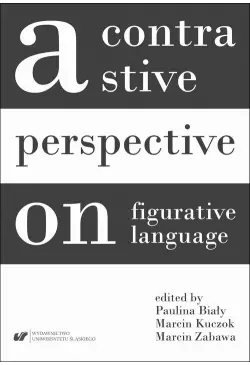
- -11%
ebook Explicitation in Simultaneous Interpreting. A Study into Explicitating Behaviour of Trainee Interpreters
Czy zastanawiałeś się kiedykolwiek, jak tłumacze podchodzą do subtelności językowych w tłumaczeniu symultanicznym? Odkryj fascynujący świat eksplicytacji w interpretacji konferencyjnej dzięki książce "Explicitation in Simultaneous Interpreting. A Study into Explicitating Behaviour of Trainee Interpreters" autorstwa Ewy Gumul.
Ta wyjątkowa publikacja, wydana przez Wydawnictwo Uniwersytetu Śląskiego w 2017 roku, zabiera czytelnika w podróż po złożonym świecie języka i komunikacji. Gumul analizuje eksplicytację w tłumaczeniu symultanicznym z perspektywy instrumentalnej, orientacyjnej oraz psycholingwistycznej. Dzięki temu odkryjesz, jak tłumacze radzą sobie z wyzwaniami czasowymi i strategiami tekstowymi w dynamicznych sytuacjach konferencyjnych.
Jeśli jesteś miłośnikiem e-booków i interesują Cię zagadnienia przekładoznawstwa, ta monografia jest dla Ciebie idealnym wyborem. Dostępna w formatach elektronicznych, jest gotowa do pobrania ze sklepu z e-bookami i natychmiastowego czytania na dowolnym urządzeniu.
Wzbogacone o elementy SEO, słowa kluczowe takie jak "ebooki", "książki elektroniczne", "sklep z ebookami" i "czytanie ebooków" czynią tę publikację łatwo dostępną dla czytelników szukających wiedzy na temat tłumaczeń konferencyjnych.
Niezależnie od tego, czy jesteś przekładoznawcą, czy językoznawcą, ta książka dostarczy Ci wartościowych informacji na temat tekstowych aspektów tłumaczenia symultanicznego. Zanurz się w świecie eksplicytacji i odkryj, jak tłumacze radzą sobie z subtelnościami językowymi w trudnych warunkach konferencyjnych.
Spis treści ebooka Explicitation in Simultaneous Interpreting. A Study into Explicitating Behaviour of Trainee Interpreters
ContentsList of abbreviations / 9
Introduction / 11
PART ONE Theoretical background and research methodology
Chapter 1. Explicitation / 19
1.1 Defining explicitation / 20
1.1.1 Definitions of explicitation in previous research / 20
1.1.2 Language independence of explicitation / 23
1.1.3 Explicitation versus addition, amplification, and overtranslation / 28
1.1.4 Explicitness and implicitness / 32
1.2 Taxonomies of explicitation / 38
1.2.1 Séguinot’s addition and specification / 38
1.2.2 Klaudy’s causal typology / 39
1.2.3 Vehmas-Lehto’s category of over-explicitation / 42
1.2.4 Klaudy and Károly’s transfer operations / 43
1.2.5 Perego’s types and forms of explicitation / 45
1.2.6 Kamenická’s and Hopkinson’s functional classifications / 47
1.2.7 Pápai’s explicitation strategies / 50
1.2.8 Murtisari’s scalar and categorical explicitation / 51
1.3 Research methods and frameworks / 52
1.4 Causes of explicitation / 57
1.5 Explicitation as a translation universal / 63
Chapter 2. Explicitation and its surface manifestations / 66
2.1 Adding connectives / 70
2.2 Intensifying cohesive ties / 74
2.3 Lexicalisation of pro-forms / 75
2.4 Reiteration / 77
2.5 Filling out elliptical constructions / 79
2.6 Adding modifiers and qualifiers / 81
2.7 Inserting hedges and discourse organising items / 83
2.8 Explicitating shifts involving proper names / 84
2.9 Including additional explanatory remarks and providing full forms for
abbreviations / 87
2.10 Replacing nominalisations with verb phrases / 90
2.11 Disambiguating lexical metaphors / 94
2.12 Lexical specification / 96
2.13 Meaning specification / 98
Chapter 3. Research methodology / 99
3.1 Aims and research questions / 99
3.2 Research design / 101
3.2.1 Method / 101
3.2.2 Participants / 105
3.2.3 Corpus / 106
3.2.4 The experimental procedure / 108
3.3 Taxonomy of surface manifestations of explicitation / 111
3.4 Conceptual framework / 114
3.4.1 The Time Constraint / 117
3.4.2 The Linearity Constraint / 125
3.4.3 The (Un)shared Knowledge Constraint / 132
3.4.4 The Memory Load Constraint / 136
PART TWO Analysis
Chapter 4. Explicitation and strategy / 143
4.1 Working definition of strategy in simultaneous interpreting / 143
4.2 Previous research / 145
4.3 Analysis / 146
4.3.1 Adding connectives / 154
4.3.2 Intensifying cohesive ties / 159
4.3.3 Lexicalisation of pro-forms / 161
4.3.4 Reiteration / 165
4.3.5 Filling out elliptical constructions / 174
4.3.6 Adding modifiers and qualifiers / 177
4.3.7 Inserting hedges and discourse organising items / 184
4.3.8 Shifts involving proper names and abbreviations / 187
4.3.9 Including additional explanatory remarks / 195
4.3.10 Replacing nominalisations with verb phrases / 199
4.3.11 Disambiguating lexical metaphors / 202
4.3.12 Lexical specification / 205
4.3.13 Meaning specification / 211
Chapter 5. Explicitation and directionality / 220
5.1 Directionality in interpreting / 220
5.2 The pilot study / 224
5.3 Analysis / 227
5.3.1 Adding connectives / 230
5.3.2 Reiteration / 232
5.3.3 Adding modifiers and qualifiers / 236
5.3.4 Disambiguating lexical metaphors / 239
5.3.5 Meaning specification / 240
5.4 Correlation with the results of the survey on directionality / 243
Chapter 6. Explicitation and interpreting style / 252
6.1 Translator and interpreter style / 252
6.2 Relating explicitation to translator and interpreter style / 255
6.3 Analysing interpreter explicitating style – methodological considerations / 257
6.4 Analysis / 260
6.4.1 Frequency / 260
6.4.2 Consistency / 263
6.4.3 Distinctiveness / 270
Conclusions / 281
Appendices
Appendix 1: The frequency of explicitating shifts for each of the 120 participants / 285
Appendix 2: Surface forms of all shifts (reported and unreported) / 288
Appendix 3: Surface forms of reported shifts / 294
Appendix 4: The number of all retrospective comments verbalised by the
participants / 300
Appendix 5: Reasons for explicitation reported by the participants in retrospective
protocols / 304
References / 305
Streszczenie / 325
Resumen / 329
Szczegóły ebooka Explicitation in Simultaneous Interpreting. A Study into Explicitating Behaviour of Trainee Interpreters
- Wydawca:
- Wydawnictwo Uniwersytetu Śląskiego
- Rok wydania:
- 2017
- Typ publikacji:
- Ebook
- Język:
- angielski
- Format:
- Liczba stron:
- 334
- Miejsce wydania:
- Katowice
Recenzje ebooka Explicitation in Simultaneous Interpreting. A Study into Explicitating Behaviour of Trainee Interpreters
-
Reviews (0)

Na jakich urządzeniach mogę czytać ebooki?
- -11%















@CUSTOMER_NAME@
@COMMENT_TITLE@
@COMMENT_COMMENT@